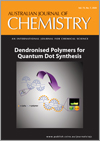
Australian Journal of Chemistry
Volume 73 Number 7 2020
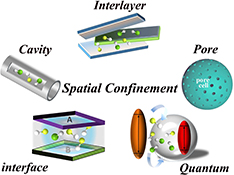
The classification of spatially confined reactions and their electrochemical applications of molybdenum nanocomposites (MoO3, MoS2, MoCx, MoCxNy, and MoP) are summarised and discussed.
CH19400The Host–Guest Properties Observed Between the Viologens and Cyclopentanocucurbit[6]uril

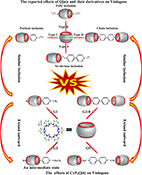
Although the host–guest chemistry of cucurbit[n]urils continues to flourish, that of the related cyclopentanocucurbit[6]uril (CyP6Q[6]) is at an embryonic stage. We are interested in the ability of CyP6Q[6] to include viologens, CyP6Q[6] shows many interesting and different properties, compared with other cucurbit[n]urils (Q[n]s) and their derivatives.
CH18376Enhanced Activity in the Tosylation of Tolanophanes via Supramolecular HgCl2 Recognition
 , Leila Sobhani, Kioumars Aghapoor, Rohoullah Firouzi, Farshid Mohsenzadeh, Hamed Yaghobi and Farshad Jafary
, Leila Sobhani, Kioumars Aghapoor, Rohoullah Firouzi, Farshid Mohsenzadeh, Hamed Yaghobi and Farshad Jafary
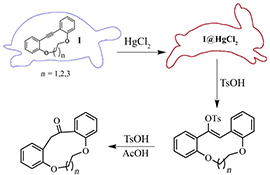
The self-activation of various tolanophanes by HgCl2 was investigated based on the tosylation of hosts. The results revealed that the rate acceleration of the tosylation of hosts is different and depends on the size of the cavity. The experimental data was supported by UV-vis spectroscopy titration and theoretical calculations
CH19333Antitumour and Antimetastatic Effects and Safety Profile of a New Magnesium(II)-Chrysin Complex
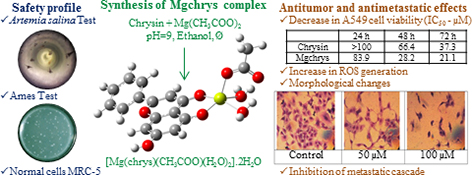
Due to the side effects of current chemotherapeutic agents, scientists have begun to consider the use of metal-flavonoid complexes in cancer treatment. Our magnesium(II)-chrysin complex behaves more as a cytotoxic agent than the free ligand on the A549 cell line and its antimetastatic effect is pronounced. Also, the compound displays no acute toxicity (Artemia salina test) and no mutagenic effect (Ames test).
CH19482Synthesis of Fatty Alcohol Ether Carboxylic Ester Surfactant and its Performance in an Anionic/Non-Ionic Mixed System
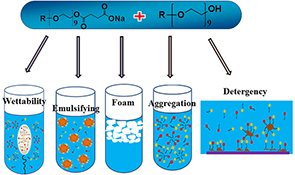
AEC surfactants have excellent properties, but they also have many shortcomings in their synthesis. We synthesised an AECE-Na surfactant similar in structure to AEC in a green and efficient method, and explored its compounding properties. This research will contribute to the development of polyfunctional surfactants and the surfactant formulation industry.
CH19539Synthesis and Properties of Maleic Acid Cholesteryl Monoester–Citric Acid Triester
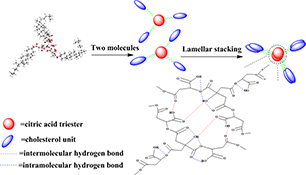
A new maleic acid cholesteryl monoester–citric acid trimester containing three cholesterol units was synthesised, providing a novel route for the synthesis of liquid crystalline materials. The compound displayed good liquid crystalline behaviours and certain thermal stability. The presence of hydrogen bonds and the increased number of cholesterol units play an important role in the formation and stability of the mesophase.
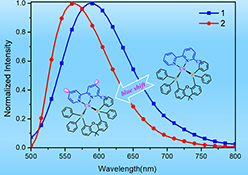
Three luminescent mononuclear CuI complexes with functionalized 6-cyano-2,2′-bipyridine chelating ligands have been successfully prepared and characterised. It is shown that the introduction of two methyl groups at the 4,4’-positions of the 6-cyano-2,2′-bipyridine leads to a blue shift of the emission and is favourable for markedly enhancing the luminescence properties.
CH19383Dinuclear Lanthanide(III) Complexes Showing Single-Molecule Magnet Behaviour and Optical Properties
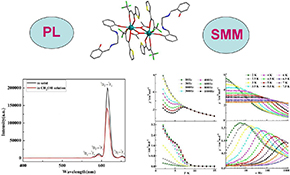
Three new isostructural lanthanide(III) complexes were synthesised and their luminescence and SMM behaviour were investigated.
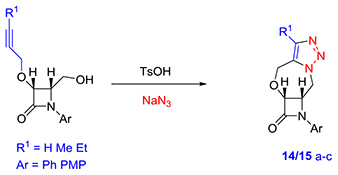
A facile metal-free intramolecular [3 + 2] cycloaddition reaction on a stereo-defined prebuilt β-lactam template for the synthesis of tricyclic oxazepane triazole β-lactam scaffolds has been achieved. The resulting unique tricyclic skeleton is presumably difficult to achieve by other existing methods. This synthetic protocol is circumvents the dominance of the copper-catalyzed click reaction.
CH20071Dendronised Polymers as Templates for In Situ Quantum Dot Synthesis
 , Cameron W. Evans
, Cameron W. Evans  , Anna M. Ranieri
, Anna M. Ranieri  , Zibeon Schildkraut, Massimiliano Massi
, Zibeon Schildkraut, Massimiliano Massi  , Marck Norret
, Marck Norret  , Martin Saunders
, Martin Saunders  and K. Swaminathan Iyer
and K. Swaminathan Iyer 
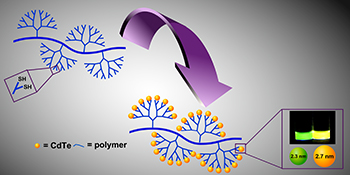
This paper describes the synthesis of green and yellow CdTe QD–dendronised polymer nanocomposites in situ using a partially thiolated dendronised polymer as capping agent and stabiliser.



